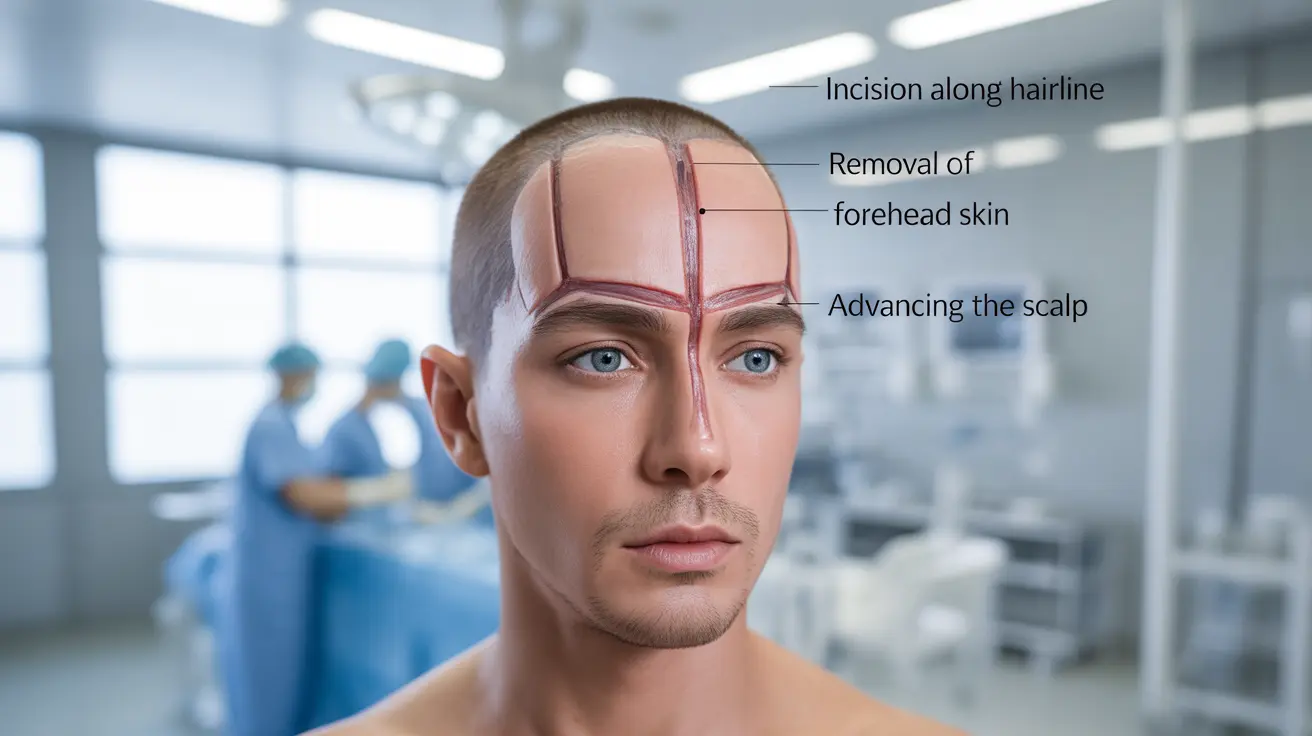Head reduction surgery, also known as forehead reduction or hairline lowering surgery, is a cosmetic procedure designed to reduce the height of the forehead and create a more balanced facial appearance. This surgical intervention has gained popularity among individuals concerned about a high hairline or disproportionate forehead size, offering a permanent solution for those seeking facial harmony.
Understanding the procedure, its benefits, risks, and recovery process is crucial for anyone considering this transformative surgery. This comprehensive guide will explore everything you need to know about head reduction surgery, from candidate selection to recovery expectations.
Understanding Head Reduction Surgery
Head reduction surgery is a specialized procedure that involves making an incision along the hairline, removing a strip of forehead skin, and advancing the scalp forward to create a lower hairline. This surgical technique effectively reduces the distance between the eyebrows and hairline, typically resulting in a reduction of 2-3 centimeters.
The procedure is performed under general anesthesia and typically takes 2-3 hours to complete. Surgeons carefully plan the new hairline position to ensure natural-looking results that complement the patient's facial features.
Ideal Candidates for the Procedure
The best candidates for head reduction surgery typically include:
- Individuals with a naturally high hairline or large forehead
- Those with good scalp laxity and flexibility
- People with stable hair growth patterns
- Patients with realistic expectations about surgical outcomes
- Individuals in good overall health
A thorough consultation with a board-certified plastic surgeon is essential to determine candidacy and discuss individual goals and expectations.
The Surgical Process
Preparation
Before the surgery, patients will need to:
- Complete medical evaluations
- Stop smoking and avoid certain medications
- Follow specific hair care instructions
- Arrange for post-operative care and transportation
During Surgery
The surgical procedure involves several key steps:
- Administration of general anesthesia
- Careful marking of the new hairline position
- Creation of the surgical incision
- Removal of excess forehead skin
- Advanced scalp positioning
- Meticulous closure techniques
Recovery and Healing Process
Recovery from head reduction surgery typically follows a predictable timeline:
- First 24-48 hours: Rest and minimal activity
- First week: Significant swelling and discomfort
- 2-3 weeks: Return to light activities
- 4-6 weeks: Resume normal activities
- 6-12 months: Complete healing and final results
Proper post-operative care is crucial for optimal healing and results. This includes following all medication schedules, attending follow-up appointments, and protecting the surgical site from direct sun exposure.
Potential Risks and Complications
While head reduction surgery is generally safe, potential risks include:
- Infection
- Scarring
- Temporary numbness
- Hair loss along the incision line
- Asymmetry
- Changes in sensation
- Bleeding
Non-Surgical Alternatives
For those not ready for surgery, several non-surgical options exist:
- Hair transplantation procedures
- Strategic hairstyling techniques
- Temporary cosmetic solutions
- Scalp micropigmentation
- Hair growth treatments
Frequently Asked Questions
What is forehead reduction surgery and how does it lower the hairline?
Forehead reduction surgery is a surgical procedure that removes excess forehead skin and advances the scalp forward to create a lower hairline. The procedure involves making an incision along the hairline, removing a strip of skin, and carefully repositioning the scalp to achieve a more balanced facial appearance.
How long does the recovery take after head reduction surgery and what should I expect?
Recovery typically takes 4-6 weeks for most activities, with complete healing occurring over 6-12 months. Initial swelling and discomfort last 1-2 weeks, with most patients returning to work after 2-3 weeks. During recovery, patients should expect some numbness, tightness, and temporary restrictions on physical activities.
What are the common risks and possible complications of forehead reduction surgery?
Common risks include infection, scarring, temporary numbness, hair loss along the incision, asymmetry, changes in sensation, and bleeding. While serious complications are rare, it's important to choose a qualified surgeon and follow all post-operative instructions carefully.
Who is a good candidate for forehead reduction or hairline lowering surgery?
Good candidates include healthy individuals with a high hairline, good scalp laxity, stable hair growth patterns, and realistic expectations. Candidates should be non-smokers or willing to quit before surgery, and have no underlying medical conditions that could impair healing.
Are there non-surgical alternatives to forehead reduction surgery for a high hairline?
Yes, non-surgical alternatives include hair transplantation, strategic hairstyling, scalp micropigmentation, and various hair growth treatments. However, these alternatives may not provide the same dramatic results as surgical forehead reduction.




